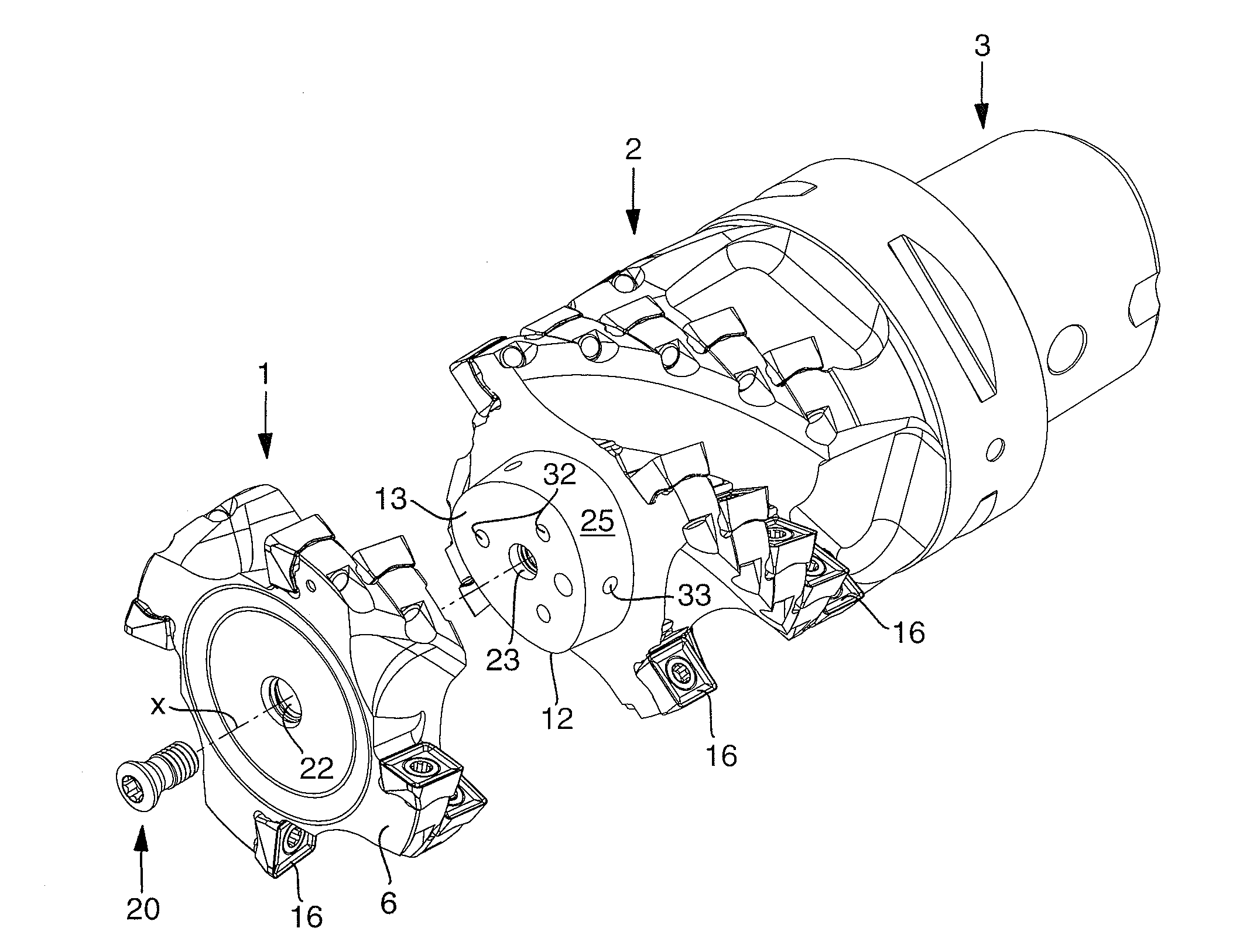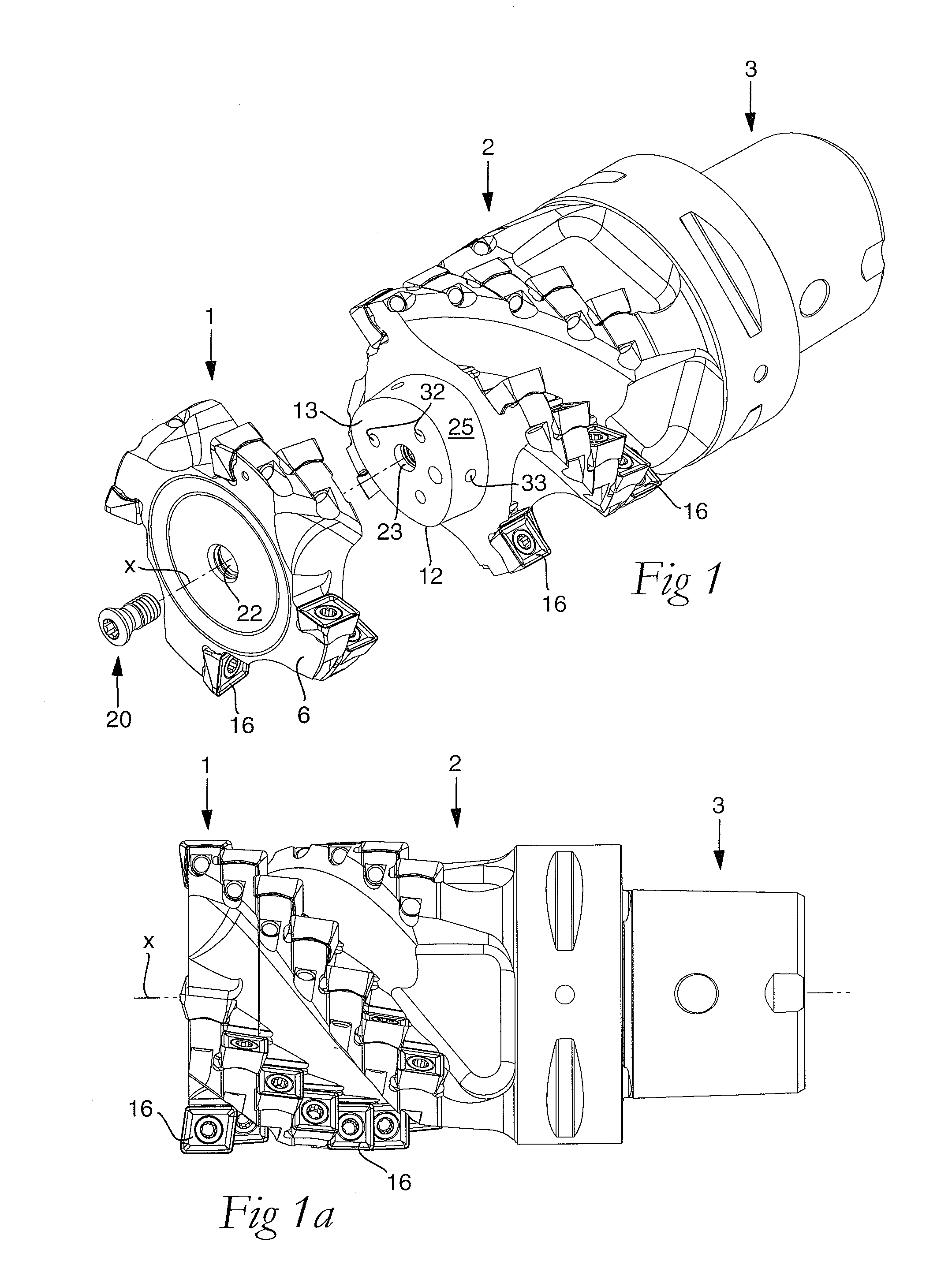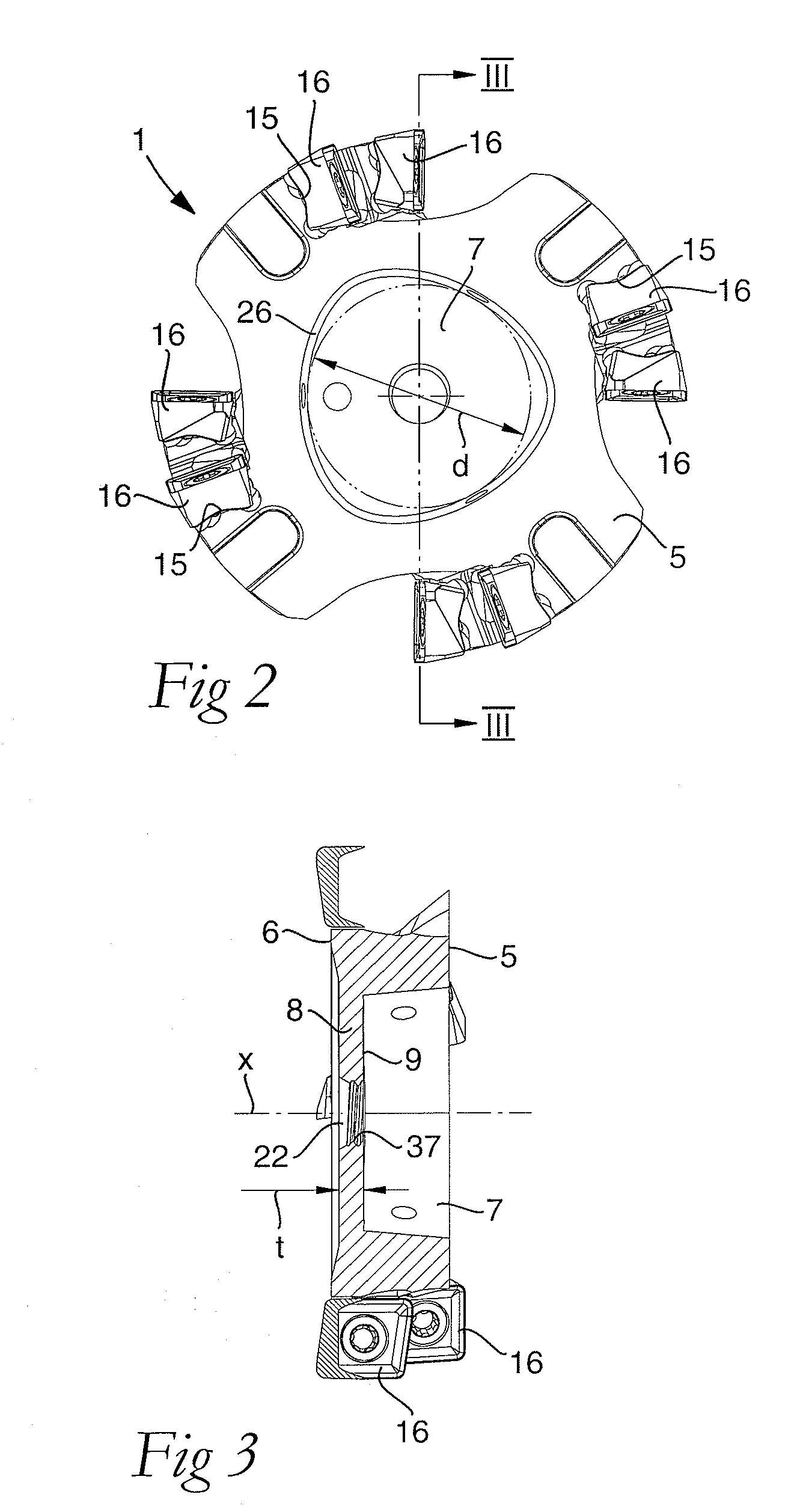Cutting tool
a cutting tool and tool seat technology, applied in the field of rotary tools, can solve the problems of large stress on the cutting insert and seat located at the front end of the tool, the entire tool needs to be replaced, and the entire tool is expensive and complicated to manufacture, so as to save spa
- Summary
- Abstract
- Description
- Claims
- Application Information
AI Technical Summary
Benefits of technology
Problems solved by technology
Method used
Image
Examples
Embodiment Construction
[0036]FIGS. 1-7 show a cutting tool for chip removing machining of metal according to a first embodiment. The tool includes a primary tool part 1, a secondary tool part 2 and a shaft part 3. In the first embodiment shown, the primary tool part 1 forms an end body while the secondary tool part 2 forms an intermediate tool body between the end body and the shaft part 3. The shaft part 3 is formed for direct fixing in a machine tool (not shown) or fixing via an extension element (not shown). The shaft part 3 may be an integrated part of the secondary tool part 2 or be detachably connected with the secondary tool part 2.
[0037]A center axis x extends in a longitudinal direction of the tool through the primary tool part 1, the secondary tool part 2 and the shaft part 3. In the first embodiment shown, the center axis x forms also the rotation axis of the tool.
[0038]In the embodiments shown, the tool is a rotary tool to be fixed in a machine tool. The tool shown in FIGS. 1-7 is a milling to...
PUM
| Property | Measurement | Unit |
|---|---|---|
| angle | aaaaa | aaaaa |
| angle | aaaaa | aaaaa |
| angle | aaaaa | aaaaa |
Abstract
Description
Claims
Application Information
 Login to View More
Login to View More - R&D
- Intellectual Property
- Life Sciences
- Materials
- Tech Scout
- Unparalleled Data Quality
- Higher Quality Content
- 60% Fewer Hallucinations
Browse by: Latest US Patents, China's latest patents, Technical Efficacy Thesaurus, Application Domain, Technology Topic, Popular Technical Reports.
© 2025 PatSnap. All rights reserved.Legal|Privacy policy|Modern Slavery Act Transparency Statement|Sitemap|About US| Contact US: help@patsnap.com



